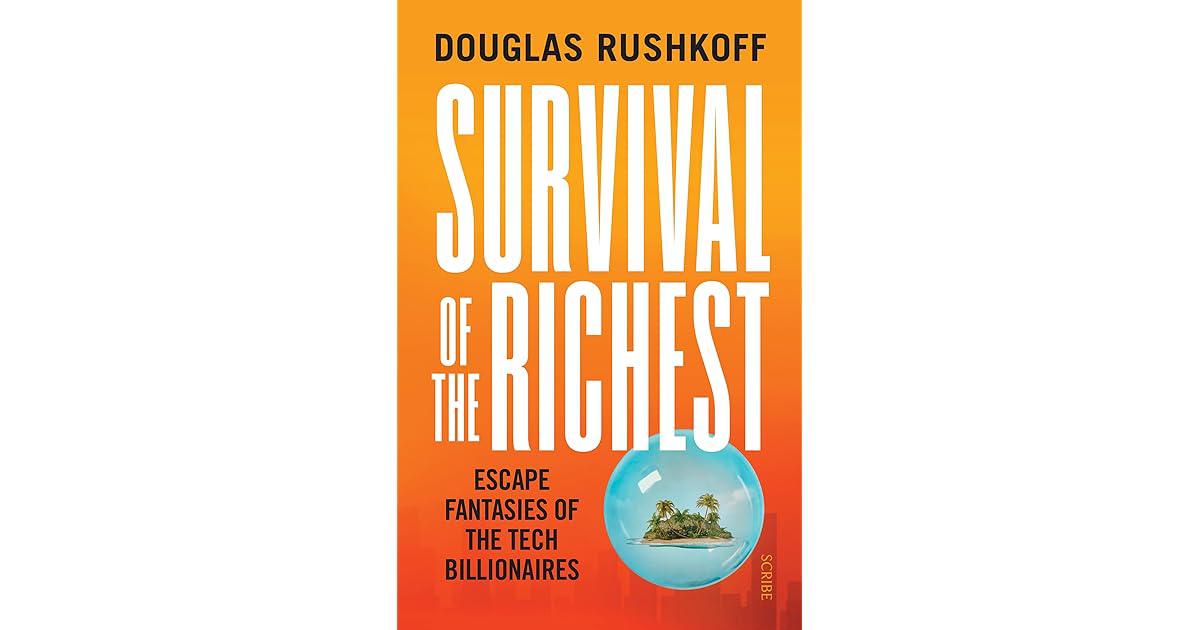
"A Critique That Resonates, Provokes, and Occasionally Misses the Mark"
A Bold Critique of the Mega-Wealthy
One of the book’s most striking arguments is Rushkoff’s assertion that Earth has enough resources to meet basic human needs, but these resources are insufficient to sustain the abstract systems designed to satisfy the mega-wealthy. This idea resonated deeply with me, as it underscores the unsustainable nature of current economic structures and the exploitation required to perpetuate extreme wealth. Rushkoff’s ability to frame this imbalance in such stark terms is one of his greatest strengths, exposing the broader consequences of prioritizing financial systems over human and environmental well-being.
Connections to My Research
Toward the end, Rushkoff delves into the “one nervous system” theory, a venture into quantum neurology and consciousness. This was an unexpected but welcome pivot, as it ties into my own research interests in the interconnectedness of systems and the potential for quantum phenomena to inform our understanding of consciousness. His willingness to weave these more speculative ideas into a book about economic and social critique adds a layer of depth that resonated with me intellectually and personally.
The Strengths of “The Mindset”
Rushkoff’s analysis of “The Mindset”—the tech elite’s belief that wealth and technology can provide an escape from societal collapse—is another highlight. His metaphor of these individuals as Wile E. Coyote, running on momentum long after the ground has disappeared beneath them, is vivid and apt. It captures the futility of their attempts to outrun the consequences of the very systems they’ve created.
His ability to connect historical shifts, like the redefinition of “home” during FDR’s time from a community-based concept to individual homeownership, provides valuable context for understanding how these patterns of detachment and privatization emerged and continue to influence societal structures.
Tone and Missteps
Despite its strengths, the book’s tone often detracts from its message. Rushkoff leans heavily on pessimism, frequently framing his arguments with terms like “can’t” and “won’t.” While his critiques are logical, the rigid tone leaves little room for the possibility of systemic breakthroughs or unforeseen solutions. This felt limiting, especially for someone like me who values systemic thinking and recognizes the potential for emergent solutions through human ingenuity or technological progress.
Additionally, some of his claims—such as wildfires in California causing poor air quality in New York—are inaccurate and veer into environmental fear-mongering. This undermines his broader environmental arguments, which don’t need exaggeration to be compelling.
Another misstep is his reliance on figures like Mark Cuban and Jordan Peterson. While their inclusion might aim to add variety or credibility, it feels contradictory in a book critiquing the very systems they thrive within. For me, this cheapened some of the otherwise strong critiques of wealth and power dynamics.
Final Thoughts
Rushkoff’s Survival of the Richest is a thought-provoking critique of wealth, technology, and the systems that sustain them. Its exploration of interconnected systems and its willingness to dive into speculative concepts like quantum neurology make it uniquely engaging. However, its tone and occasional inaccuracies detract from its impact, making it feel overly rigid and, at times, contradictory.
For those interested in examining the mindset of the tech elite and the ethical implications of their actions, this book provides valuable insights. Still, I found myself craving a more balanced tone that could critique without dismissing the potential for change. To round out the experience, I’d recommend pairing this book with fiction authors like Isaac Asimov or James S.A. Corey, who explore human resilience and systemic transformation with a more optimistic lens. Otherwise, the insights gleaned from this book will prove to be valuable for years to come.